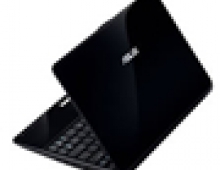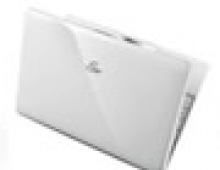
35 Million Netbook Shipments Expected in 2009: An Era Begins
The time is right for the netbook. According to analysts at ABI Research, a confluence of social and technological factors has created a kind of "perfect storm" that will lead to a market explosion for netbooks over the next few years.
The firm forecasts worldwide shipments of nearly 35 million this year, rising to an estimated 139 million in 2013.
Practice director Kevin Burden describes this evolution: "PDA?s began our reliance on instant accessible data while traveling. When PDA functionality converged with cellular voice, smartphones became the new darling of mobile professional technology that many expected to evolve into the hub for all data and communication needs for travelling professionals. Today, with a better understanding for what a smartphone is, is not, and may never be, along with a reality check on the usefulness of UMPCs, the market remains open for new device types."
Smartphones did a lot to raise our comfort level with mobile technology as well our expectations for how connected we could be and how accessible information and data should be while on the road. Enter the netbook with its light-weight, medium-sized form factor and low-cost processors leading to moderate overall price points may finally have "right-sized" mobile technology for productive travels.
While the advent of low-cost, power stingy x86 and ARM processors were the technical keys to netbooks, Burden argues that industry and consumer expectations also needed to evolve before netbooks would meet market acceptance. "In recent years, the industry still expected the smartphones to be more than they turned out to be, and most recently, MIDs were thought to be the next big mobile devices segment, but an unclear usage model continues to confuse the market. So today, netbooks? time has come, and ABI research expects them to enjoy very strong market growth."
ABI Research?s "Mobile Devices Annual Market Overview" delivers an integrated view of the mobile devices market and examines the unique market aspects of individual device form factors, including mobile handsets, ultra mobile devices, broadband-enabled consumer electronics and cellular modems. For a complete copy of the report, click here.
Practice director Kevin Burden describes this evolution: "PDA?s began our reliance on instant accessible data while traveling. When PDA functionality converged with cellular voice, smartphones became the new darling of mobile professional technology that many expected to evolve into the hub for all data and communication needs for travelling professionals. Today, with a better understanding for what a smartphone is, is not, and may never be, along with a reality check on the usefulness of UMPCs, the market remains open for new device types."
Smartphones did a lot to raise our comfort level with mobile technology as well our expectations for how connected we could be and how accessible information and data should be while on the road. Enter the netbook with its light-weight, medium-sized form factor and low-cost processors leading to moderate overall price points may finally have "right-sized" mobile technology for productive travels.
While the advent of low-cost, power stingy x86 and ARM processors were the technical keys to netbooks, Burden argues that industry and consumer expectations also needed to evolve before netbooks would meet market acceptance. "In recent years, the industry still expected the smartphones to be more than they turned out to be, and most recently, MIDs were thought to be the next big mobile devices segment, but an unclear usage model continues to confuse the market. So today, netbooks? time has come, and ABI research expects them to enjoy very strong market growth."
ABI Research?s "Mobile Devices Annual Market Overview" delivers an integrated view of the mobile devices market and examines the unique market aspects of individual device form factors, including mobile handsets, ultra mobile devices, broadband-enabled consumer electronics and cellular modems. For a complete copy of the report, click here.

















